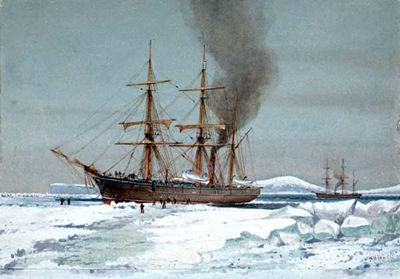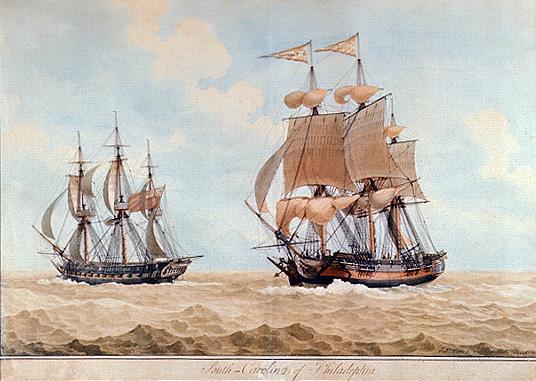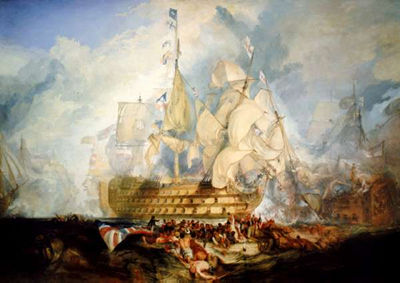FAMOUS SHIPS IN HISTORY
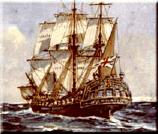
The mutiny on the “Bounty” occurred in April 1789, and in 1790 part of the crew landed on Pitcairn Island in the Pacific and settled there. It is stated that the present population of some 170 souls are all descendants of the rebellious crew and the few natives who accompanied them.
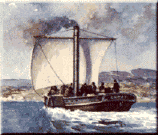
The “Comet” was built at Port Glasgow in 1811-1812 by "Henry Bell" of Glasgow and owes the name to a comet, which appeared about the time of her completion. She was 40 feet long with a 10.5 feet beam and had engines of 3 h.p., which operated paddles. This curious looking craft made possible the ocean liners of today showing the advantages of steam engines.
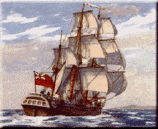
In 1768 the 30-ton barque “Endeavour” set out for the Pacific and achieved world fame. "James Cook", who commanded the vessel surveyed a greater length of coast than any other navigator. He discovered Australia and the channel since known as Cook Strait. “Endeavour” was only100 feet in length. Actually she was built for carrying coal and not for exploration.
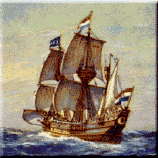
The “Half Moon”, a ship of 80-tons carried "Henry Hudson" and a crew of 20 men across the Atlantic in 1609 when he explored the famous river and the bay which now bear his name. 300 years after its reputed trip the “Half Moon” has been reconstructed to take part in the Hudson-Fulton celebration of 1909. The Half Moon was about 63 feet from stern to stern post and ended her days by fire in India.
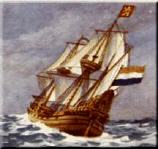
The “Heemskerk” and her sister ship “Zeehaen” both scarcely larger than fishing smacks, set forth into the unknown from the East Indies in 1642 and made history in introducing Tasmania (Anthonij van Diemen’s Landt) and New Zealand (Staten Landt) to the European World. "Tasman" who was the greatest of Holland’s navigators made the discoveries.
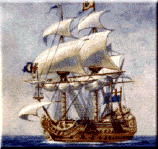
The “Naseby” formed the part of the mighty fleet under Cromwell. She became famous as the vessel which brought Charles II safely back from exile at the time of Restoration. In the second Dutch war (1664 – 1667) “de Ruijter” captured “Naseby”, which then had been renamed "Royal Charles" and towed it back to Holland with 15 other British vessels. She was broken up in 1673 but her stern carving can be still seen in "Rijks Museum" in Amsterdam.
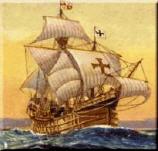
This is a picture of the “Santa Maria”, the flagship of "Columbus", whose voyages of discovery doubled the size of the then known world. This tiny ship a type of carrack of 100 tons sailed into the unknown in 1492 with a crew of 52, accompanied by two caravels, the “Nina” and the ”Pinta”. The “Santa Maria” went aground on an Island now called Haiti. A replica was built in Spain for exhibition in the United States in 1892, but research has since cast doubts on the dimensions and design of this vessel. The anchor of the "Santa Maria" can be seen in the Pantheon-Musee National in Port-au-Prince, Haiti.
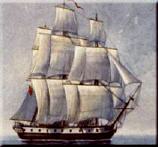
The sloop “Investigator” carried the gallant but unfortunate "Capt. Mathew Flinders" on his voyage of exploration in 1801. The voyage made history and is famous for the legacy it left in revealing South Australia proper. Flinders also seems to have discovered the errors of the compass caused by iron in ships. The “Investigator” was abandoned in a leaky state at Port Jackson and Flinders did not live to enjoy his laurels-his narrative “A Voyage to Terra Australia” was published on July 19th 1814, the day on which he died.
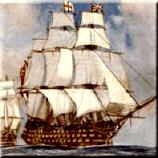
In all the long stories of ships, there is no name more illustrious than that of “HMS Victory”, the flagship of "Horatio Nelson", when he annihilated the French and Spanish fleet and made Britain the Mistress of the seas. Built in 1765, the “Victory” had been in service 40 years at the time of the Trafalgar engagement. Her length was 186 feet and she carried 100 guns. Portsmouth harbor still cherishes this historic ship which has been restored to the exact condition it was when Nelson breathed his last.
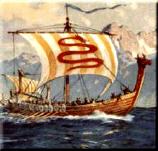
The Northern seas bred sea-going vessels of a special type; these Viking ships had queer names such as “Dragons” and "Serpents” and were propelled by both sail and oar. By the 9th century ships such as the one above found their way into the Mediterranean and it is probably the Danes who invaded England using the same type of boats. Alfred the Great, according to the Saxon Chronicle, must be credited with improvements for swiftness and steadiness. He built vessels twice as long as those of the Danes, which enabled him to defeat them at sea (897).
